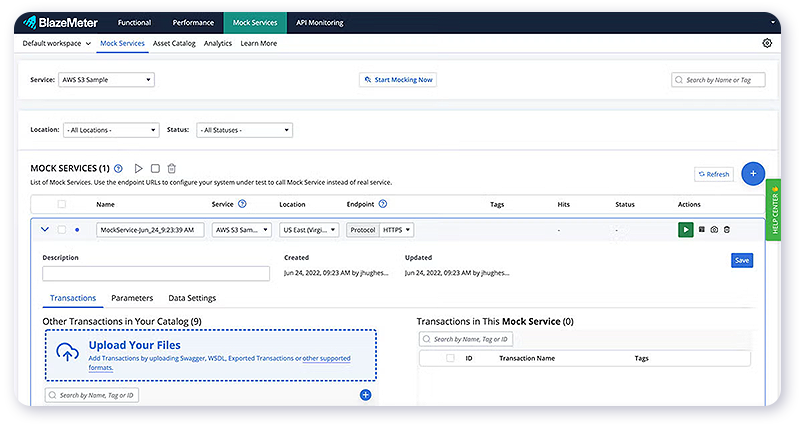
Create Lightweight Virtual Services for Any Test
Traditional Service Virtualization applications can be complex to set up, time consuming to use, and very expensive to own. Virtual Services and stubs don’t allow you to create real-world response scenarios such as slow or unexpected responses. BlazeMeter provides an easy way to set up virtual services and virtual service environments with BlazeMeter Service Virtualization.
Testing against unavailable or complicated (expensive) services can create bottlenecks in your CI/CD pipeline. With BlazeMeter Service Virtualization you can eliminate dependencies to test faster and more completely. Configure and integrate service virtualization with your BlazeMeter tests so they never have to be created and managed separately from the test.
Why BlazeMeter Service Virtualization?
Create on demand Virtual Services in your CI/CD Pipeline. Automated, deployable, and maintainable, you can easily spin these Virtual Services up on BlazeMeter’s Continuous Testing platform whenever needed. BlazeMeter supports Docker and Kubernetes and can automatically start up and shut down for your specific tests.
What You Can Do With BlazeMeter Service Virtualization
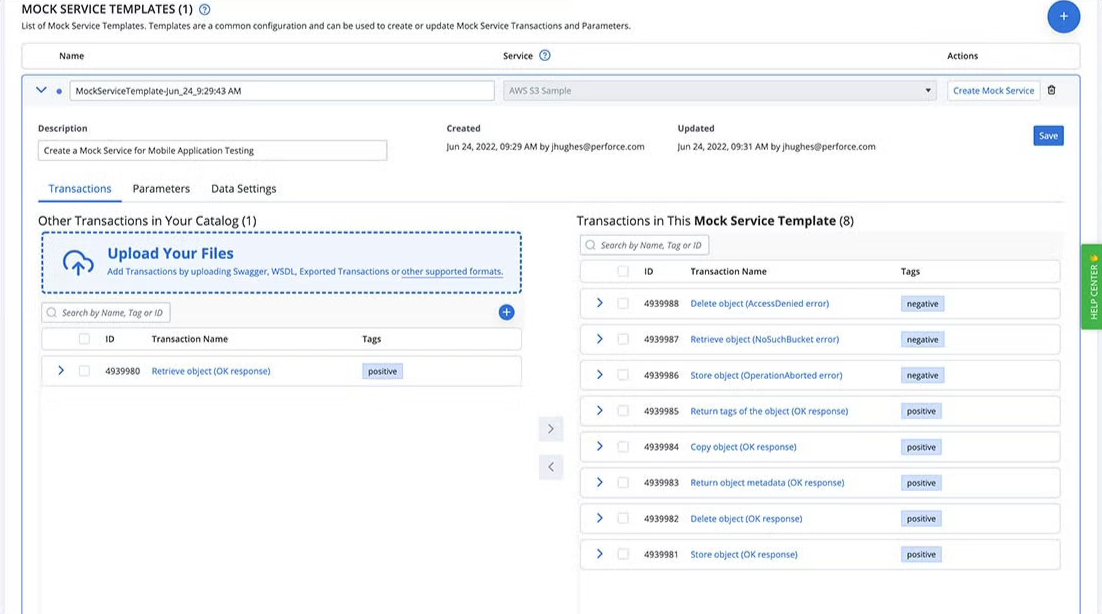
Service Virtualization Makes Better Tests
Shift left testing means testing at the API and component level of your applications. To do this accurately, you need to isolate the functionality under test. This is where virtual services come into play. With Service Virtualization you can virtualize parts of the system that are not under test, or not available (e.g., still in development), and get discrete insight into the quality and performance of what you’re testing.
With BlazeMeter Service Virtualization you can mimic any component or service, giving you realistic responses so that your testing can continue without delay.
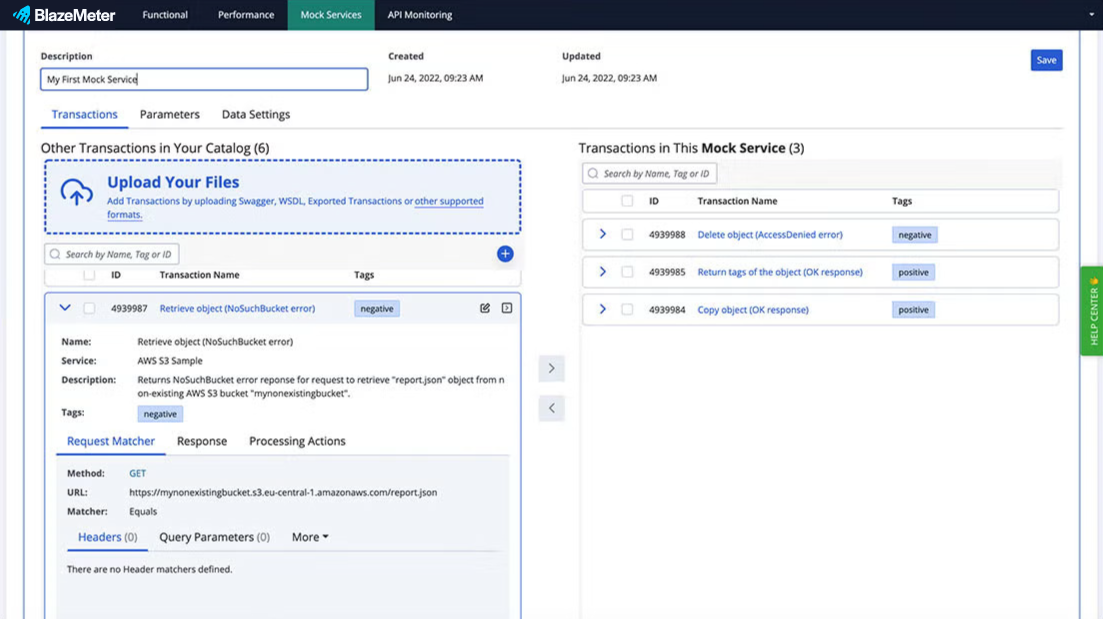
Service Virtualization: More Than Just Mocks
Traditional mocks deliver a single, simple bounce-back response. BlazeMeter Service Virtualization realistically simulates the real-world behavior of a service. Test your app under both good and unpredictable conditions with both happy path and negative responses (slow response times, incomplete inputs, unexpected errors, or even chaotic behavior). Get your app ready for whatever the world throws its way.
BlazeMeter's Stateful Service Virtualization provides the ability to replicate a variety of state changes. These states include fields of data, incremental data changes, and object state.
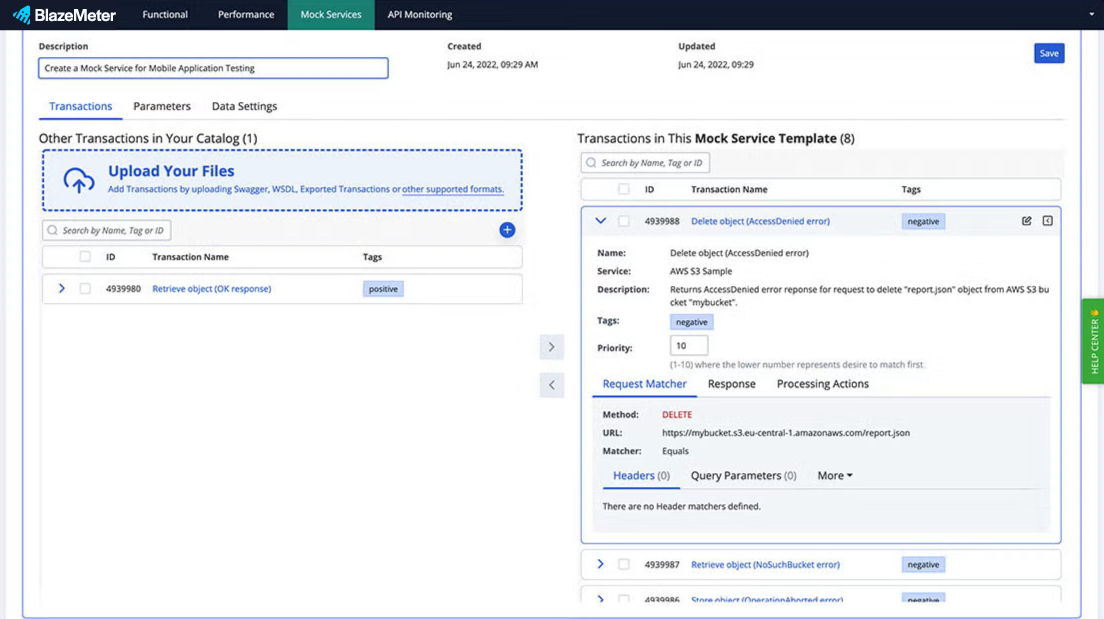
Support for Mobile Application Testing
BlazeMeter Service Virtualization also works with your mobile application testing. When developing/testing mobile applications you must deal with a lot of dependencies (such as app backend services) and 3rd party systems that could slow down/block your development and testing efforts. Instead, use BlazeMeter Service Virtualization to get these constraints under control.
Perfecto testers can call up BlazeMeter Virtual Services as part of their tests to help eliminate service dependencies.
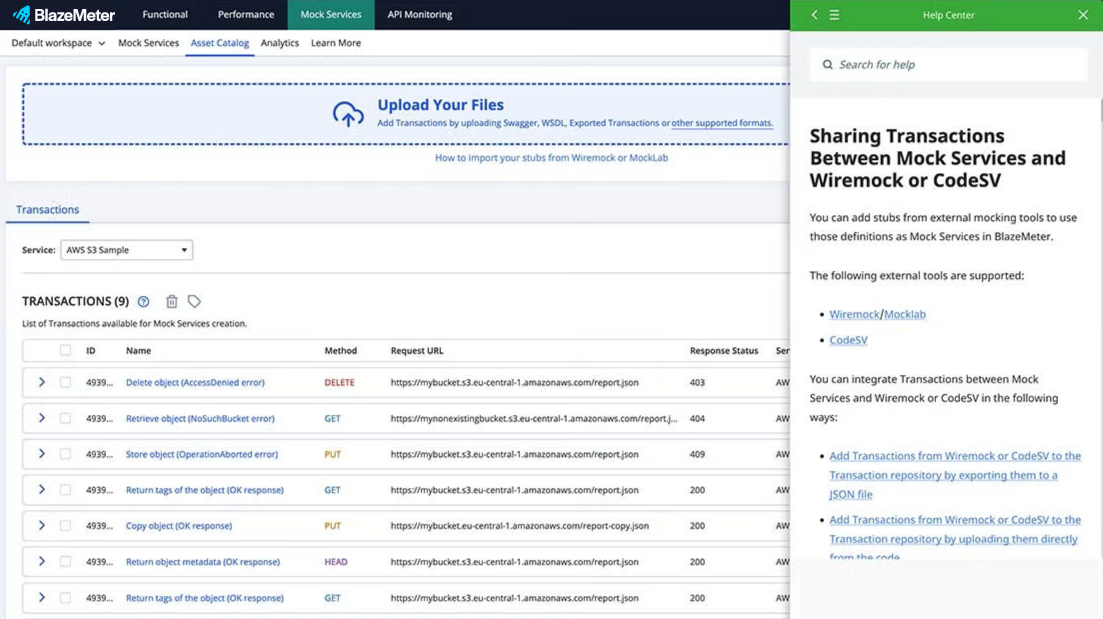
Open-Source and Third-Party Compatible
Create your Virtual Services with open-source tools like Wiremock , or with your own tools of choice. Easily import API specifications like Swagger and .HAR files, integrate with on-prem Service Virtualization tools, or use the proxy recorder or UI to create mocks without coding. Store and share virtual services with your team in the transaction repository, no matter which system or method was used to create the original services.
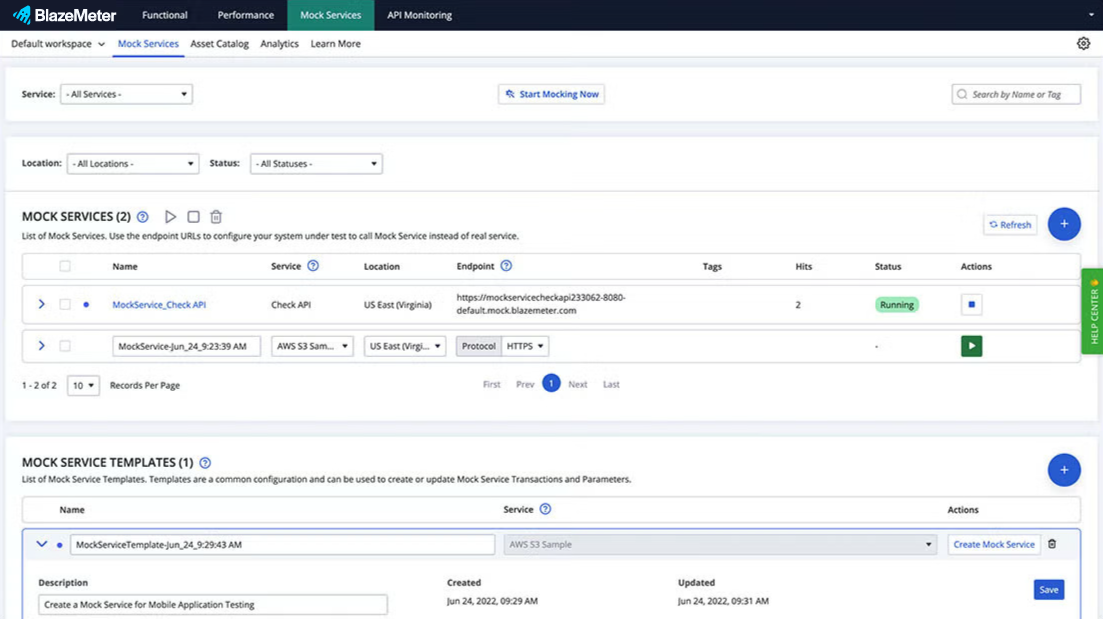
Service Virtualization in the Continuous Testing Toolchain
Service Virtualization is a vital part of your continuous testing toolchain. BlazeMeter is the only platform that unifies all the information required for a test to run into a single test asset. Data and services are automatically included through these inherent deep integrations. Save time, reduce complexity, and improve coverage and accuracy.
Learn How to Use Service Virtualization on BlazeMeter University
Share Mock (Virtual) Services Across Teams
Access and share your virtual services created anywhere in the organization or import services you've developed using external tools such as WireMock/Mocklab. With BlazeMeter's self-defining tests, these virtual services are automatically inserted into tests each time they run. This industry-unique feature allows you to test better and faster!
Simulate Real-World Behavior and Virtual Environments
Continue to test even when you don't have access to the full environment. See for yourself how you can easily build, scale, analyze, and automate performance tests.
Want to learn more about BlazeMeter Service Virtualization?
Sign up for a free, no obligation personalized demo.
